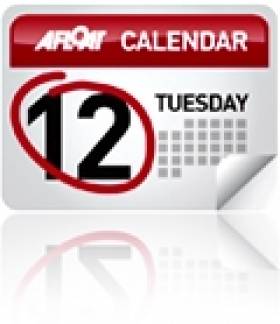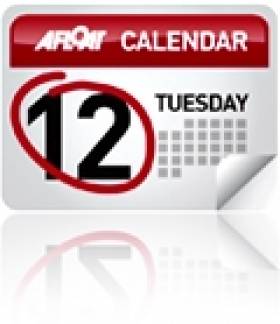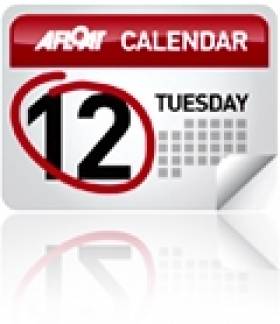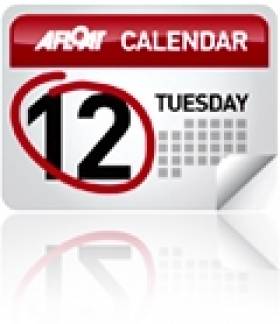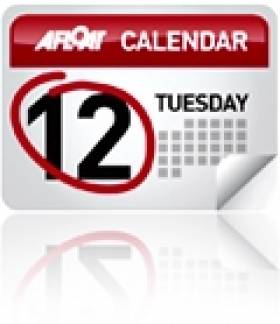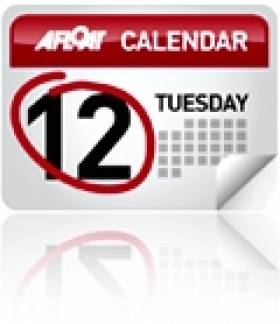Displaying items by tag: Stella Maris Seafarers' Club
Lecture: Shackleton’s Endurance Expeditions: 1914-17
#Lecture – A talk will be given on Shackleton's Endurance Expeditions: 1914-17 next Thursday (21 March) at 8pm in the Stella Maris Club, Beresford Place, Dublin city centre.
All are welcome to the lecture, where there is an entrance fee (recommended donation €5) per person
The Stella Maris Club is located close to the Irish Life (ILAC) Mall complex car park, the Customs House and Busaras. It is convenient to the Luas (Red Line: Busaras stop) and the DART (Connolly and Tara Street stations).
The Maritime Institute runs a maritime museum, the National Maritime Museum of Ireland located in Dun Laoghaire. Co. Dublin. For further details visit: www.mariner.ie
Lecture: Smuggling in the Eighteenth Century
#LectureSmugglers – Following Joe Varley's lecture held last week in the Poolbeg Y&BC Marina, Dublin, there's another chance to hear his lecture "Smuggling in the 18th Century".
The lecture is to take place this Thursday (21 February) at 20.00hrs at Stella Maris Seafarers Club, Beresford Place, in the city-centre.
The illustrated talk is hosted by the Maritime Institute of Ireland and is part of the winter/spring lecture programme.
Varley will demonstrate why the 18th century is regarded as the golden age of smuggling. This contention will be examined from mainly the viewpoint of the smuggler.
Examples of Irish and British smuggling activity will be given, including a detailed example of wool smuggling from Roundstone in Connemara in the 1730's.
The Stella Maris is located close to the Irish Life Mall car park (ILAC), the Customs House and Busaras. It is convenient to the Luas (Red Line: Busaras stop) and DART (either Connolly or Tara Street stations).
The Maritime Institute has a maritime museum, the National Maritime Museum of Ireland located in Dun Laoghaire. Co. Dublin. For further details on lectures, museum and more click HERE.
Lecture: The East India Company in Kinsale
#LECTURE - This month's lecture organised by the Maritime Institute of Ireland (M.I.I.) is about 'The East India Company in Kinsale', presented by Paddy O'Sullivan.
The lecture will be held next Thursday (15th March) starting at 8pm and as usual takes place in the Stella Maris Seafarers Club on Beresford Place, close to Busaras and behind the Customs House.
O'Sullivan is an engineer, diver, author, and lecturer has uncovered a vast amount of information about the activities of the East India Company in Munster, regarding ship-building, trading, iron smelting, and cannon casting.
All are welcome to attend the evening where a bar and refreshments are available. A voluntary contribution is at the door. The organisers would be pleased for anyone to kindly forward details about the lecture programme, held monthly (third Thursday) at the city-centre venue.
Public transport: The nearest DART stations are Connolly Station and at Tara Street in addition to the LUAS (Red) line stop at Busáras. Car parking is located in the Irish Life Mall (ILAC) on Lower Abbey Street. For information of the lecture programme call 086 150 3766 and by visiting www.mariner.ie/lectures-spring-2012
Lecture: Building Dun Laoghaire Harbour
#LECTURE – This month's lecture organised by the Maritime Institute of Ireland (M.I.I.) is about 'Building Dun Laoghaire Harbour' and is to be presented by Colin Scudds.
The lecture next Thursday (16th February) starts at 8pm and as usual takes place in the Stella Maris Seafarers Club on Beresford Place, close to Busaras and behind the Customs House.
All are welcome to attend the evening where a bar and refreshments are available. A voluntary contribution is at the door. The organisers would be pleased for anyone to kindly forward details about the lecture programme, held monthly (third Thursday) at the city-centre venue.
Public transport: The nearest DART stations are Connolly Station and at Tara Street in addition to the LUAS (Red) line stop at Busáras. Car parking is located in the Irish Life Mall (ILAC) on Lower Abbey Street.
For further information and of the lecture programme, contact 086 150 3766 and visit www.mariner.ie/lectures
Lecture: 'The Kowloon Bridge & Her Sisters'
The Stella Maris Seafarers' Club, Beresford Place, is located beside Busaras and faces opposite the rear of the Customs House. Nearby is the Irish Life Center (ILAC) which is convenient for car-parking and buses, the 'Red' Luas (Busaras stop) and DART stops at Connolly /Tara St. stations. All are welcome, bar and refreshments and a voluntary contribution is appreciated.
For further information about lectures and updates on the M.I.I's maritime museum located in the Mariners Church, Dun Laoghaire log on to www.mariner.ie. The museum which is due to reopen this year are looking for volunteers to help, for further details click here.
Lecture: “The Newfoundland Voyage”
All are welcome, bar and refreshments and a voluntary contribution is appreciated. Further lectures will be held throughout the winter, mostly on the third Thursday of each month and in the Stella Maris. Note that the March lecture is due to be held on the 'fourth' Thursday of that month.
For further information about lectures and updates on the M.I.I's maritime museum in Dun Laoghaire, log on to www.mariner.ie
Lecture: Liffey Ships and Shipbuilding
The lecture starts at 8pm and is held in the Stella Maris Seafarers' Club, Beresford Place and is located beside Busaras and faces opposite the rear of the Customs House. The club is also close to the Irish Life Center (ILAC) which is convenient for car-parking and buses, the 'Red' Luas (Busaras stop) and DART at Connolly /Tara St. stations.
All are Welcome, bar and refreshments and a voluntary contribution is appreciated. Further lectures will be held throughout the winter, mostly on the third Thursday of each month and in the Stella Maris. For further information, Maritime Institute of Ireland (M.I.I.) website www.mariner.ie
Lecture: Ferries of Cork
All are Welcome, bar and refreshments and a voluntary contribution is appreciated. Further lectures will be held throughout the winter, mostly on the third Thursday of each month and in the Stella Maris. For further information, Maritime Institute of Ireland (M.I.I.) website www.mariner.ie


























